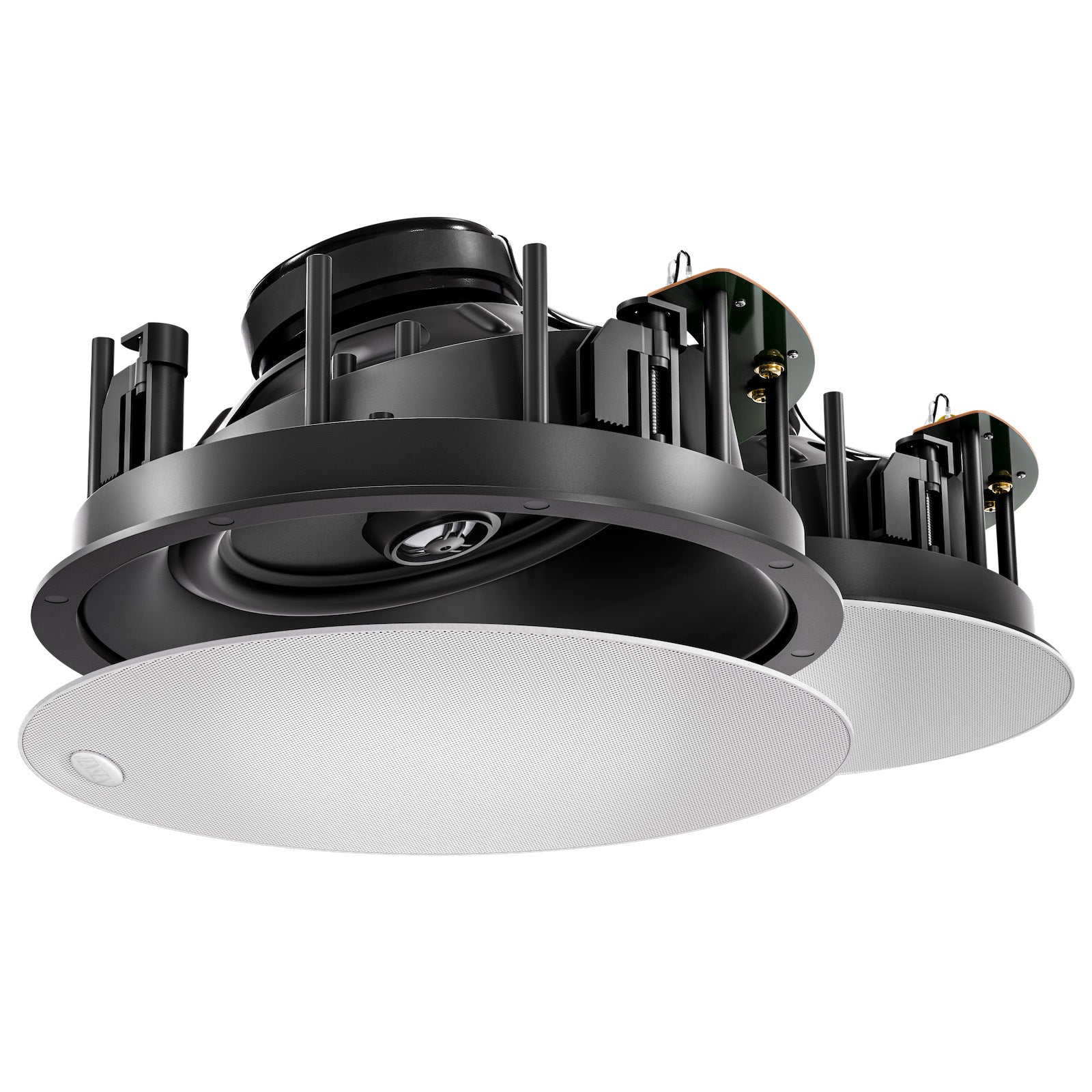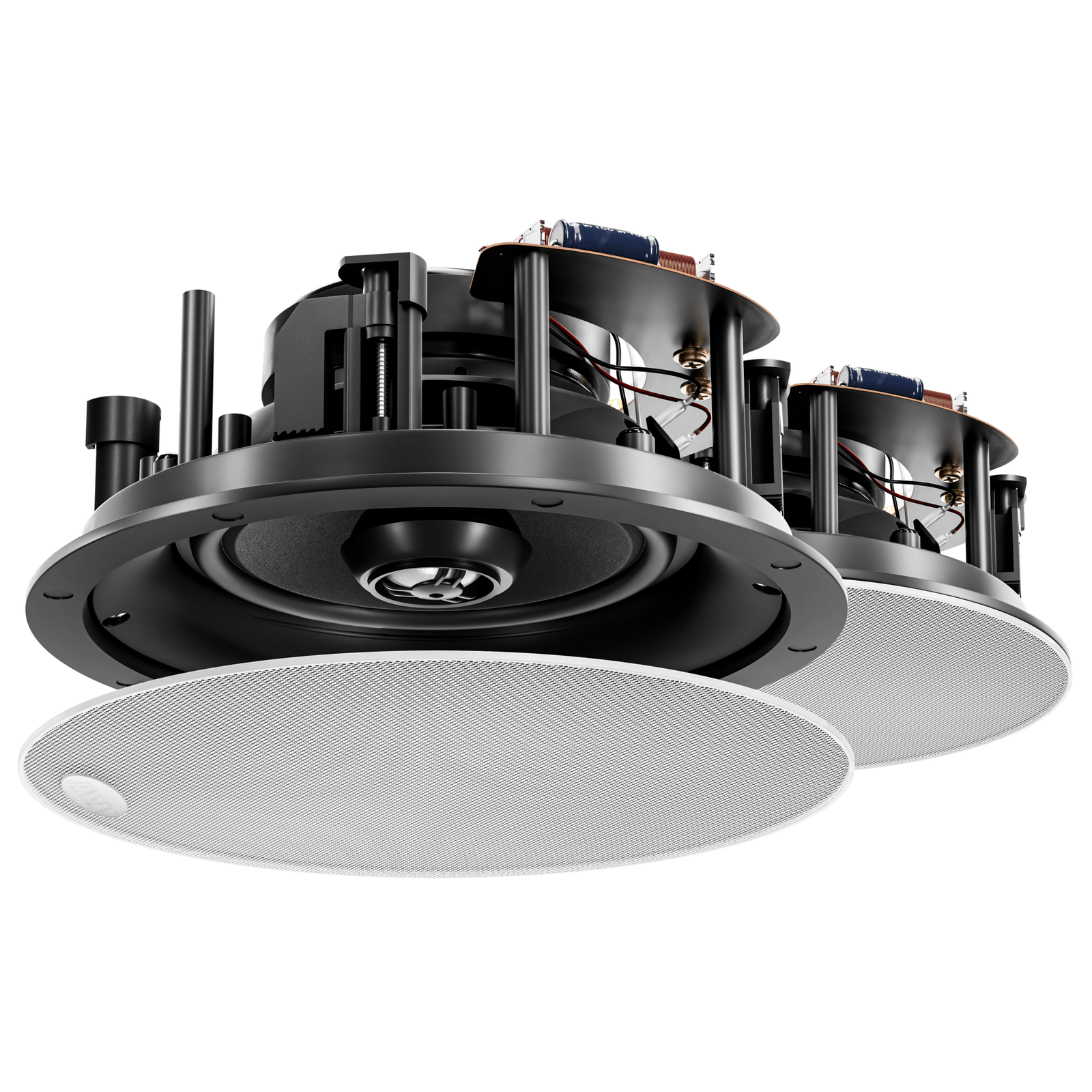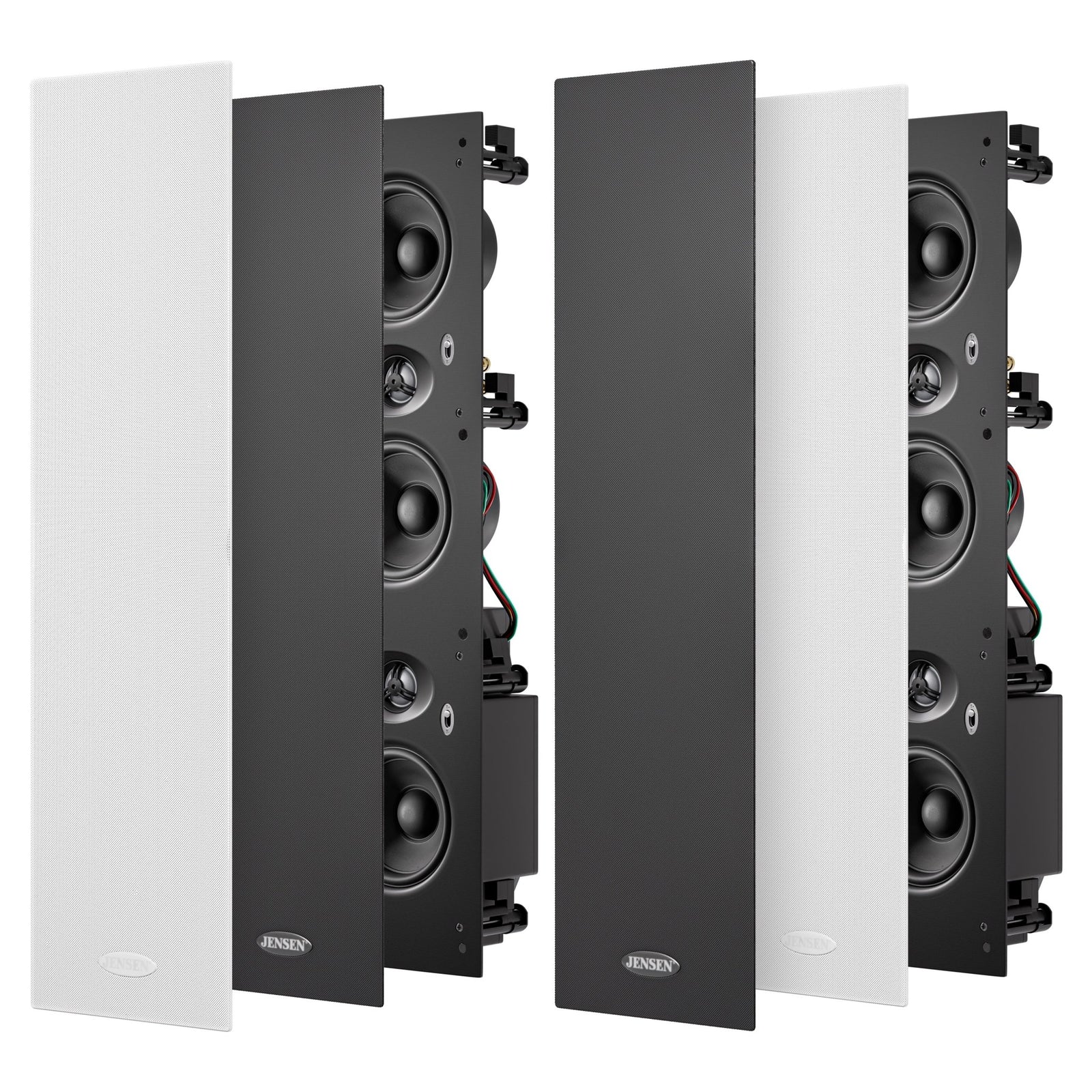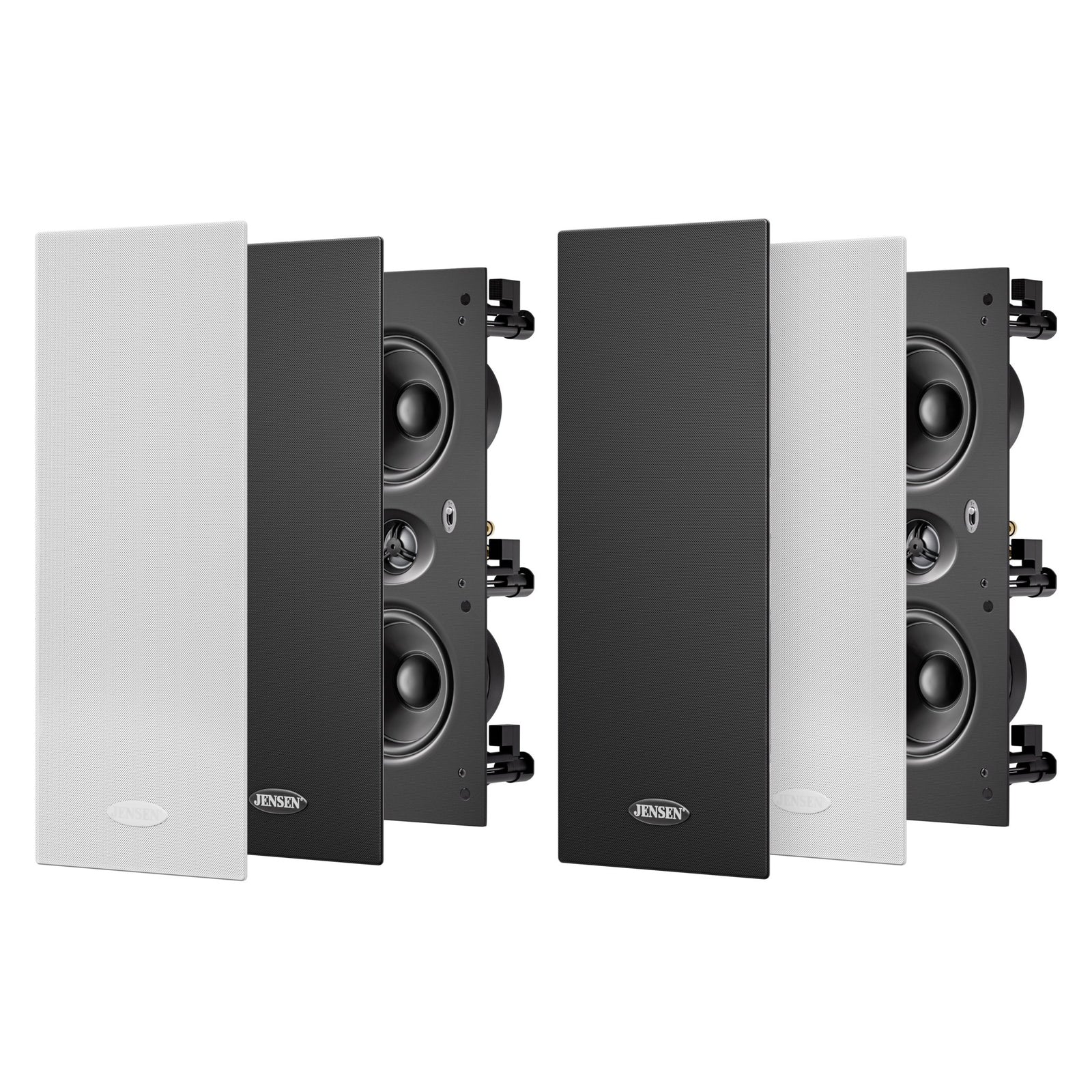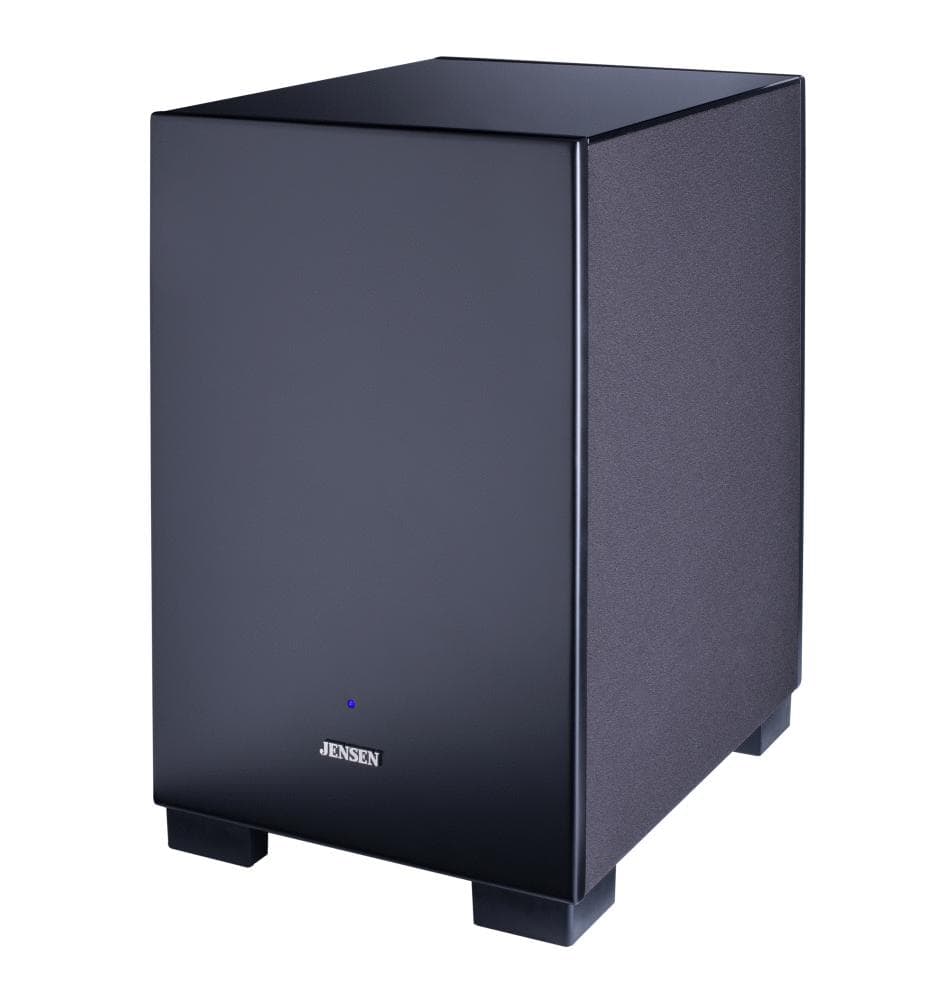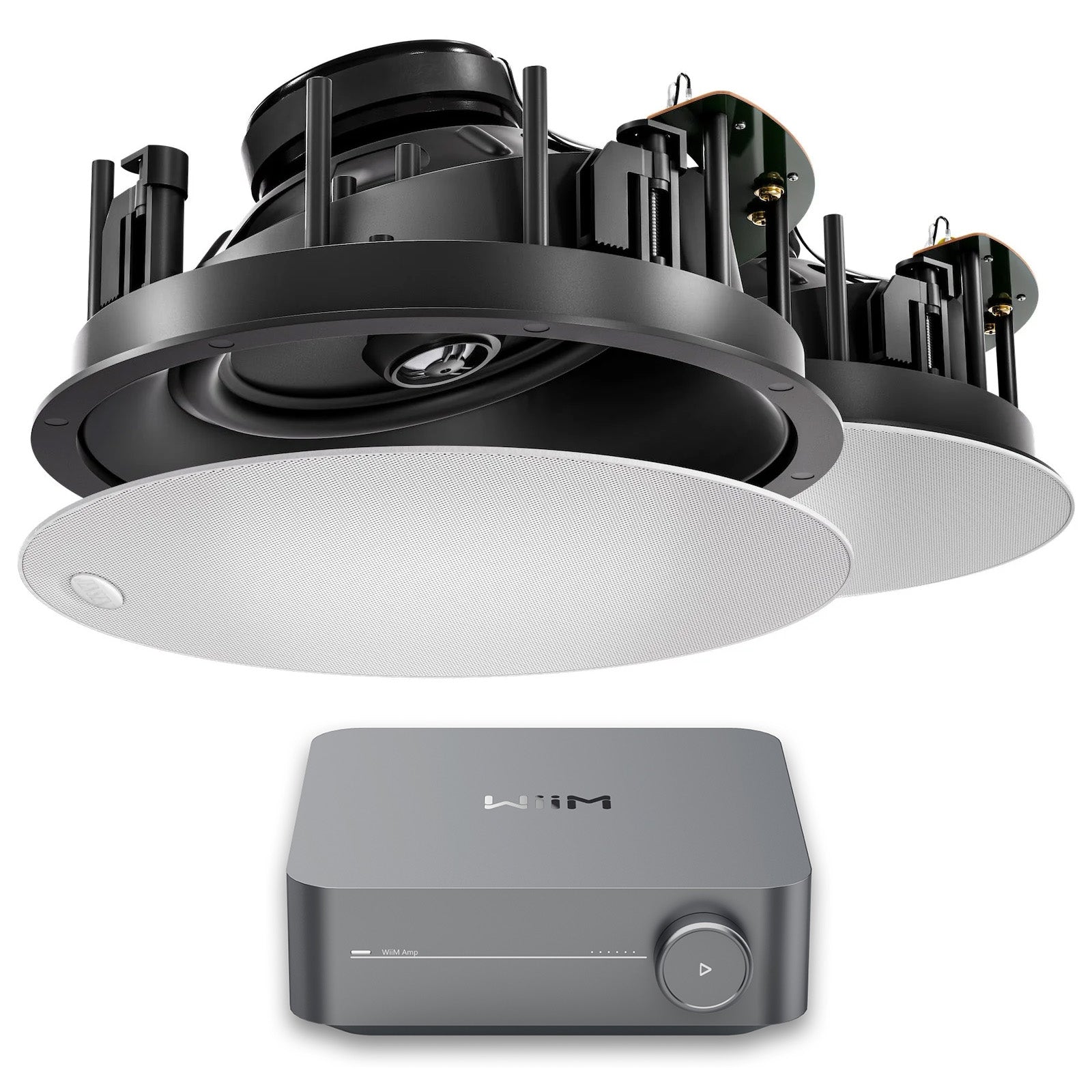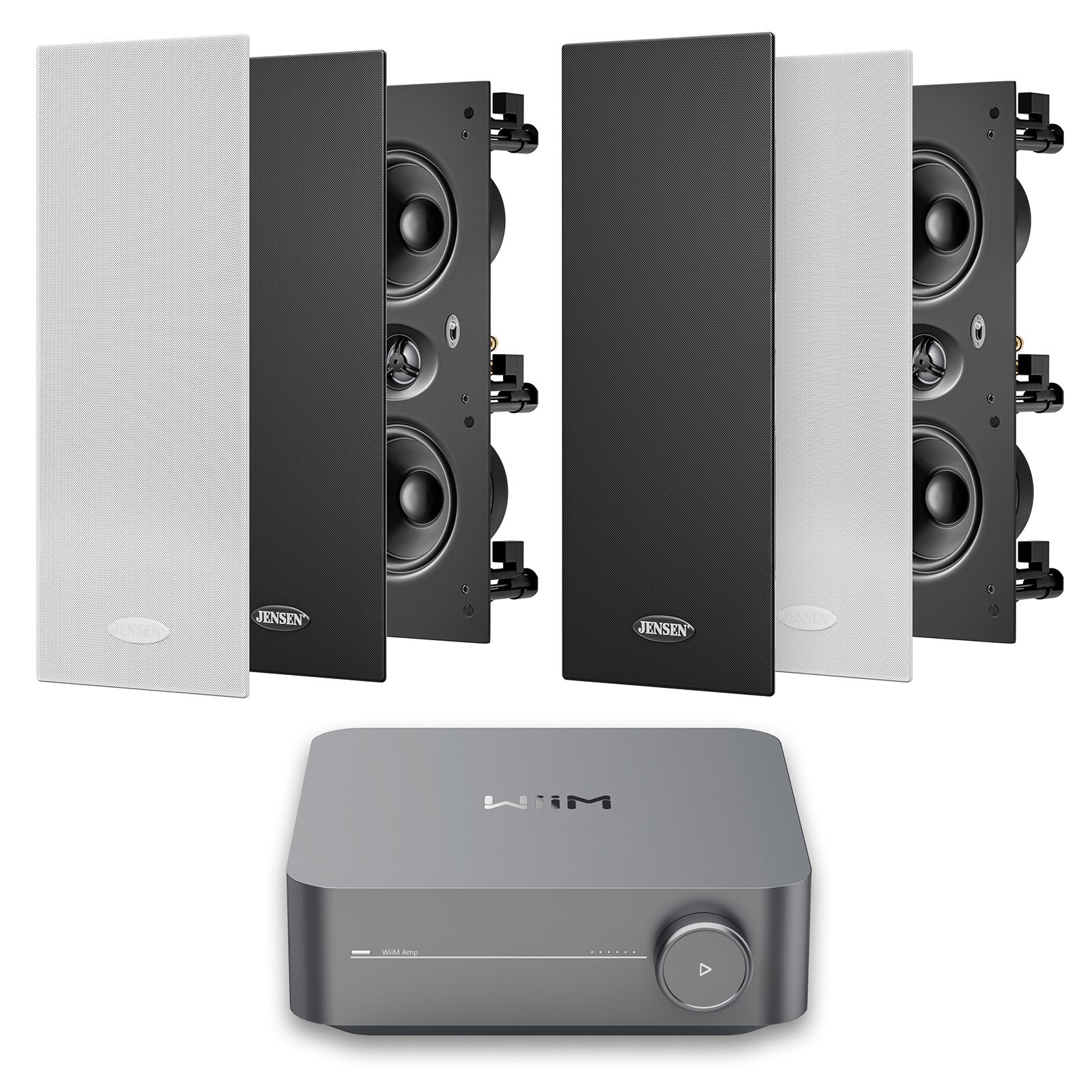4 REASONS TO ADD ATMOS TO YOUR HOME THEATRE

- Why ATMOS is so different from traditional surround sound.
- How you can get some ATMOS in your life.
- What DTS:X is (any why it’s different).
- Why ATMOS is well worth it, explained in detail.
Let’s crack into it.
Contents
- What Is Dolby ATMOS?
- ATMOS Sounds Amazing
- ATMOS Is Better Than 7.1
- ATMOS Is Heavily Supported (And Growing)
- ATMOS Improves Room Filling Music Experiences
What Is Dolby ATMOS?

Dolby ATMOS is an “object-based” surround sound encoding technology. Object-based means the program that places each sound treats the sound like an object — instead of like a location. That’s the technical explanation. To put it more simply… It takes the existing surround sound technology and adds “sounds from above.” Dolby Labs developed ATMOS in 2012 for cinema use. In that setting it can accommodate up to 400 different speakers, creating a 3D landscape that places sounds anywhere in a room. Traditional surround sound systems placed sounds in a ring around the room at ear level. Dolby ATMOS is the next advancement, andit adds overhead channels to the 5.1 or 7.1 schemes. It’s a powerful, affordable, and easy-to-include addition to the consumer home theatre experience.
You can get Dolby ATMOS surround sound in your own home cinema by: Using an AV receiver that decodes ATMOS. Playing media that has ATMOS tracks on it. And, Having in-ceiling speakers above your listening position. Most AV receiver brands today support Dolby ATMOS. And there is an enormous library of media that supports it as well (including Netflix, Apple TV 4K, Ultra HD Blu-ray, and more). True Dolby ATMOS sound requires having speakers located above you. There are alternatives —reflective ATMOS speakers and ATMOS soundbars — but they do not compare. They require the ceiling height and ceiling material to be ideal to work. And often the sound is muddy or it doesn’t come from above at all. Your ears are smart enough to know the difference.How do I get ATMOS at home?
ATMOS refers to a technology created by Dolby Labs. DTS (originally “Digital Theatre Systems”) started competing with Dolby in 1993 withJurassic Park. And DTS:X is their version of object-based surround sound technology. If you take a closer look there are a few differences between ATMOS and DTS:X. But the most important to know are: (1) DTS:X is not present on nearly as much media as Dolby ATMOS (e.g. Netflix doesn’t support it). (2) DTS:X is supported by all major AV receiver brands (so you don’t need to worry about it). For most of this discussion about WHY object-based surround sound is worth it (it is!), I’ll refer to Dolby ATMOS. It’s the household name for this new technology. For a list of Blu-ray movies featuring DTS:X, visithere.What is DTS:X?
ATMOS Sounds Amazing

Without question:Dolby ATMOS makes a difference that you can hear. Having those height channels playing overhead, along with properly encoded media, creates an amazing sense of place. The technology is stunning. Your ears and brain perceive sounds from above much differently than those from in front or behind. Another important thing to know about this experience is that ATMOS allows sounds to move from ear level speakers up to the overhead ones.This “panning” effect tells your brain you’re in an audio sphere. It fills every location in the room — instead of triggering your awareness to a few spots like with 5.1 and 7.1. If you’re serious about your home audio setup,ATMOS is an awesome addition to consider. A 5.1 with ATMOS is better than 7.1 (more on this below).
Dolby ATMOS (and DTS:X) are responsible for placing object and panning them across different locations. But the most noticeable addition to the experience might be the “overhead sounds.” These height channels play sounds like:What sounds can you expect from above?
- Soaring airplanes and helicopters.
- Thrown objects flying from the front, overhead, and landing in the back.
- Rustling trees in a forest.
- Birds chirping overhead.
- Fireworks shooting into the sky.
- Rain falling on the tin roof of a shed.
ATMOS Is Better Than 7.1

One of the biggest reasons to get ATMOS for your home theatre pops up when you start considering 7.1. If you want MORE than just a plain 5.1 surround sound system, the traditional solution was 7.1 — add two more surround speakers at ear level to spread out sounds behind you. Well now you can take another path with Dolby ATMOS. And… Dolby ATMOS sounds better than 7.1. Many home theatre buyers are going with a5.1 system and adding Dolby ATMOS (this is called 5.1.2) instead of just adding 2 more surround speakers. The improvement in using modern object-based sound placement over 7.1 is massive. The sense of 3D immersive audio is better. With exception to entry level “budget” models, AV receivers tend to have “7.1 channels.”This means you can do 7.1, or 5.1.2 — but not both. That’s why making this decision is important. Andthe better experience is 5.1.2 over 7.1. Note:If you want a second zone in your home, a 7.1 channel AV receiver will only allow one 5.1 system plus the second zone. To get ATMOS for 5.1.2, plus another zone, you’ll need a “9.1 channel receiver.”What to know about AV receivers and ATMOS
ATMOS Is Heavily Supported (And Growing)

Dolby ATMOS has caught on big time. And that’s one of the reasons it’s worth getting. If you’re going to invest in a home theatre system and you want it to be good, you want to get the most out of today’s content.Dolby ATMOS is supported by audio-visual hardware and software, modern disc media (Ultra HD 4K Blu-ray), most new cinematic films, and many new console and PC games. There are over 500 titles now available with ATMOS, including popular shows. All major Hollywood studios now support Ultra HD 4K Blu-ray (and ATMOS 3D sound). You can see the latest films featuring ATMOS on theDolby Labs website. Streaming services — the “media players of the future” — also support Dolby ATMOS:
- Netflix on a lot of smart devices (LG TV, Sony, Apple TV 4K, new Xbox consoles, etc.)
- Disney Plus
- Apple TV + (including most “Apple Originals”)
- Amazon Prime Video (only some titles at this time)
The way this technology improves the audio experience has caught fire and that’s exactly why it’s growing. It’s a must for any new home theatre project, or to add to existing theatre rooms.
ATMOS Improves Music Experiences

The other reasons to get Dolby ATMOS for your home theatre are strong enough to justify it. But there is one more reason… When you’re not playing an ATMOS-enabled film — but music instead —your ATMOS speakers will boost room filling sound. When you set an AV receiver to “multichannel stereo” mode, it plays left and right audio to create a stereo image… but it does so across the entire room. All the left side speakers will play the LEFT track, and the right side will play the RIGHT. This is an amazing effect for background listening and especially for parties. The additional height speakers in your ceiling will move more air at a given volume level. So you can keep your system at lower volume levels — and end up with better detail filling out the entire room. In addition: ATMOS mixed music is a growing trend. The aim is to take stereo imaging and spread it to anywhere in a room. You can learn more about which artists are producing in ATMOS on theDolby Labs website.
If you’re planning an ATMOS home theatre system for yourself, and you’re wondering where you’ll place them, our new article "Where should I put my ATMOS speakers?" will be posted soon.
